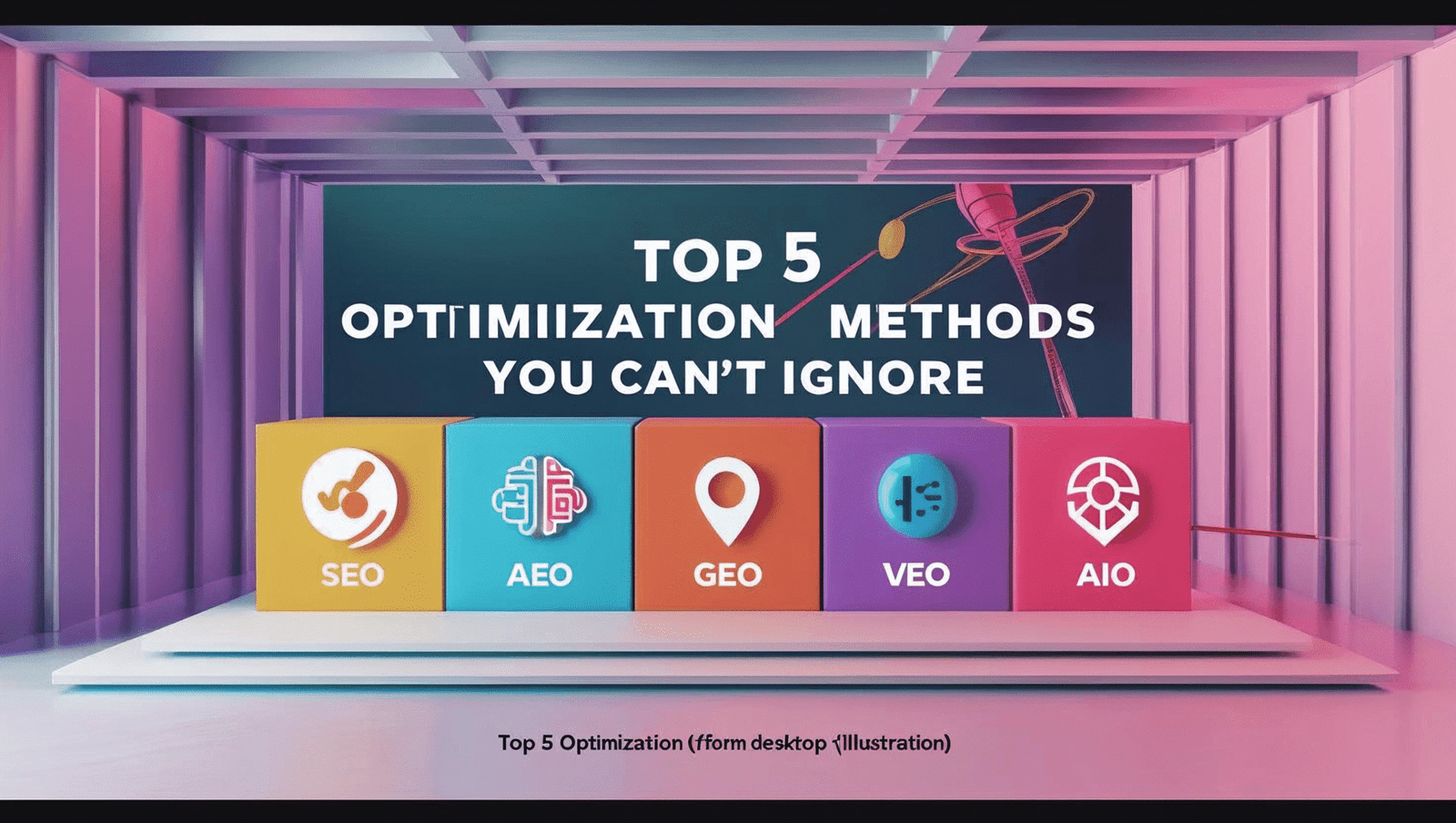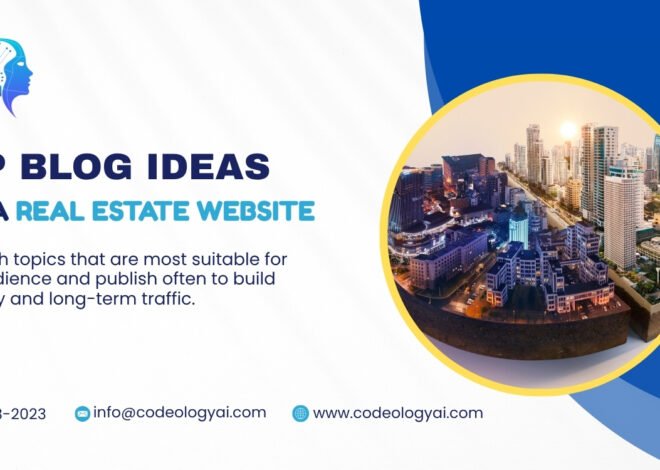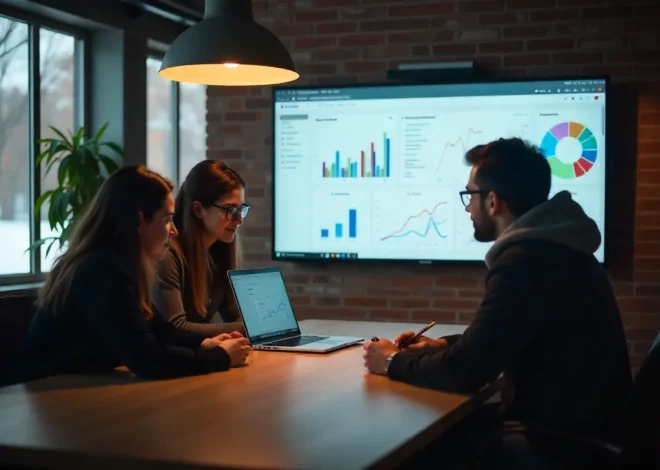
The Complete Guide to Modern Optimization: Evolving From SEO to AI-Based Methods
In the contemporary world, ‘optimization’ means far more than competing with rival opportunities. It is core to any business or professional trying to succeed. Whether you are an IT firm, a new startup, an established professional, or a seasoned enterprise, we take your digital needs seriously through SEO to AI-Based Methods. Executive orders are now mastered when implemented.
This blog covers comprehensive ancient and basic search engine optimization techniques, as well as futuristic systems that use AI-powered optimization (AIO). What are these, and how do these methods contribute to transforming the economy on both small and large scales, pushing progress toward smarter, sharper growth?
Why Optimization Still Rules the Digital Game
Think of optimization as your business’s digital oxygen. It guarantees visibility during searches, voice prompts, or even queries directed to AI about your brand. If optimal strategies garner no attention, even the best products and services go to waste.
Voice searches, backlinks, and keywords are only part of the bigger picture; optimization now integrates search behavior patterns, local relevancy, AI interpretation, and real-world location-driven marketing. Let’s explore the core pillars of this modern digital framework.
Top 5 Types of Optimization You Can’t Ignore

1. SEO – Search Engine Optimization
Online visibility for businesses and institutions still depends heavily on how their websites rank on Google or other search engines. But modern SEO is far more advanced. Here’s what matters now:
- User Intent Mapping: Understand not only the keywords but the reason behind them. Is the user purchasing something, wanting to learn something new, comparing different options, or simply navigating a website?
- Semantic Search Integration: Use related words and synonyms as well as vertical topic groups so that search engines grasp the meaning of terms beyond mere words.
- Core Web Vitals: As a ranking criterion, page speed, mobile friendliness, and visual stability of the site have a tremendous impact comparatively.
- EEAT Principles: Every piece of content should exhibit expertise and experience while also demonstrating authority and trust, discharge from each piece, and inclusively showing faith to all parties.
- Continuous Optimization: Competing with other industry players requires constant refinement with new algorithm changes. SEO isn’t static.
We conduct comprehensive audits using tools like Screaming Frog and SEMrush to tailor strategies that give search engines updates.
2. AEO – Answer Engine Optimization
AEO is all about positioning your content to be selected by AI and search engines as the definitive answer to a user’s question.
- Query Intent Matching: Tailor your content to respond to specific queries with short, informative, and structured answers.
- Answer-First Format: Begin sections with a concise answer and expand afterward. Great for featured snippets.
- High-Authority Source Linking: Citing well-ranked, credible sources enhances trustworthiness and snippet eligibility.
- Voice Search Friendly: AEO-optimized content often doubles as voice search content. Short, crisp, and natural language is the key.
- Zero-Click Optimization: Even if users don’t click through, your brand gets visibility on Google’s front page.
Use “What is,” “How to,” and “Why does” formats. Structure them in 40–60 word blocks.
3. GEO – Geo Targeting or Geolocation Optimization
GEO optimization guarantees that your business is listed in the relevant places where potential customers can access it. This is important for businesses with physical locations or those offering services limited to specific regions.
- Hyperlocal Intent Strategy: Understand the hyperlocal terms your audience uses. For example, take, for instance, “digital agency in Sector 62 Noida” vs. “digital agency in Noida.”
- Dynamic Content Adjusted Based on User Location: Change your content dynamically using geo-IP or GPS data.
- Localized Link Building: Acquire backlinks from local domain sites and regional news sources to enhance authority for local search results.
- Location-Based Structured Data: Enhance search significance by applying LocalBusiness and GeoCoordinates schema.
- Cultural Context: Use language, holidays, and other relevant contexts to evoke emotions surrounding the emotionally adjustable content.
We create customized local landing pages and integrate Google Maps APIs for location-rich performance.
4. VEO – Voice Engine Optimization
Voice searches are typically dialogue-based and request-centered. It is necessary to revise the keyword paradigm and content layout for optimization purposes.
- Phrase Usage: Commonly used phrases include “what’s the best,” “where can I,” and “how do I,” which form parts of questions voice searches put forward. Content should be tailored to address them.
- Featured snippets: Content minimizing with headline infringement presumption remarks is usually stated when advertisements target distinct quotes from other texts. Format your answers in paragraph, list, and table formats.
- Action-Oriented Local Voice Queries: “Where’s the nearest IT company open now?” – Combine VEO with GEO.
- Conversational Tone & Natural Language: Avoid keyword stuffing. Use a dialogue-like structure in writing.
- Mobile UX Optimization: Since most voice searches already exist on mobile, improving the user experience of a website or app on a mobile device.
Tools like Answer the Public and AlsoAsked help gather real user questions for smarter VEO content planning.
5. AIO – Artificial Intelligence Optimization
While AI is revolutionizing the capabilities of search engines in content processing, indexing, and serving it to users, AIO focuses on ensuring content is readable by machines and approved by humans.
- AI-Ready Structuring: Process your content into context-rich fragments that are semantically tagged for easier understanding.
- Conversational Clarity: Express an understanding of the reader’s plight and avoid jargon so the AI recognizes the output as credible human prose.
- Topic Authority Hubs: Design interrelated content knowledge clusters to establish topical authority for AI crawler recognition.
- Image and Video Metadata Enrichment for AI Parsing: Meta-tag multimedia assets such as images and videos with alt-tags, captions, and semi-structured JSON-LD for enhanced AI reading.
- Training Data Compatibility: Ensure your content can be scraped and fed into future AI models such as Google SGE or OpenAI’s retrieval systems.
We specialize in building content ecosystems that perform across traditional and AI-driven channels.
Optimization Strategy Snapshot
| Strategy | Focus Area | Key Benefits |
| SEO | Search Ranking | Increases visibility & traffic |
| AEO | Featured Answers | Boosts credibility & CTR |
| GEO | Local Reach | Dominates nearby searches |
| VEO | Voice Discovery | Captures conversational search |
| AIO | AI Interpretation | Future-proofs your content |
Practical Optimization Tips by Industry
For IT Companies & Startups:
- Construct topic clusters related to services such as DevOps, SaaS, or even cybersecurity.
- Add explainer videos and optimize video transcripts for SEO and AIO.
- Host AMAs (Ask Me Anything) on LinkedIn and transcribe for AEO/VEO use.
For Professionals & Coaches:
- Write geo-optimized blogs showcasing past success stories in your local region.
- Use chatbots trained with NLP for instant Q&A.
- List yourself in industry-specific directories with optimized bios.
For Businesses with Physical Locations:
- Implement WhatsApp and SMS campaigns linked to location-based deals.
- Integrate the Google Reviews schema on the website for visibility.
- Add “service area” pages for broader regional ranking.
Conclusion: Optimization In The Modern Marketing World
From old-school SEO techniques to newer strategies of AI-powered discovery systems, these methods outline how organizations can have an online presence in today’s market. These aren’t modern buzzwords; they are devices essential for growth and trustworthy lead generation. We blend our words for both machines and humans. Reach out to us at Codeology AI today, and together we can create a digital footprint of your business.
FAQs About Optimization Strategy
Q1: What is the difference between AEO and SEO?
Ans. Both consider your content’s traffic potential, but with SEO, the goal is general exposure with the search engine. AEO targets ensuring your content gets highlighted as a direct answer (through Google snippets or AI answers).
Q2: Is GEO optimization useful for small businesses?
Ans. Absolutely. Even local salons and cafes can be visible by targeting local keywords along with Google listings.
Q3: Is voice search optimization challenging to put into practice?
Ans. Not at all! Use more natural language, conversational copy, FAQs, and questions for headings to make documents easy to understand.
Q4: Why should I be concerned with AI optimization?
Ans. With engines and platforms shifting towards an AI-focused framework, failing to optimize for AI means your content risks being overlooked, unranked, or unused in responses.
Q5: What services does Codeology AI provide for optimization?
Ans. We provide end-to-end solutions, including tailored digital strategies of SEO, AEO, VEO, GEO, and AIO, designed for every business size and purpose.



